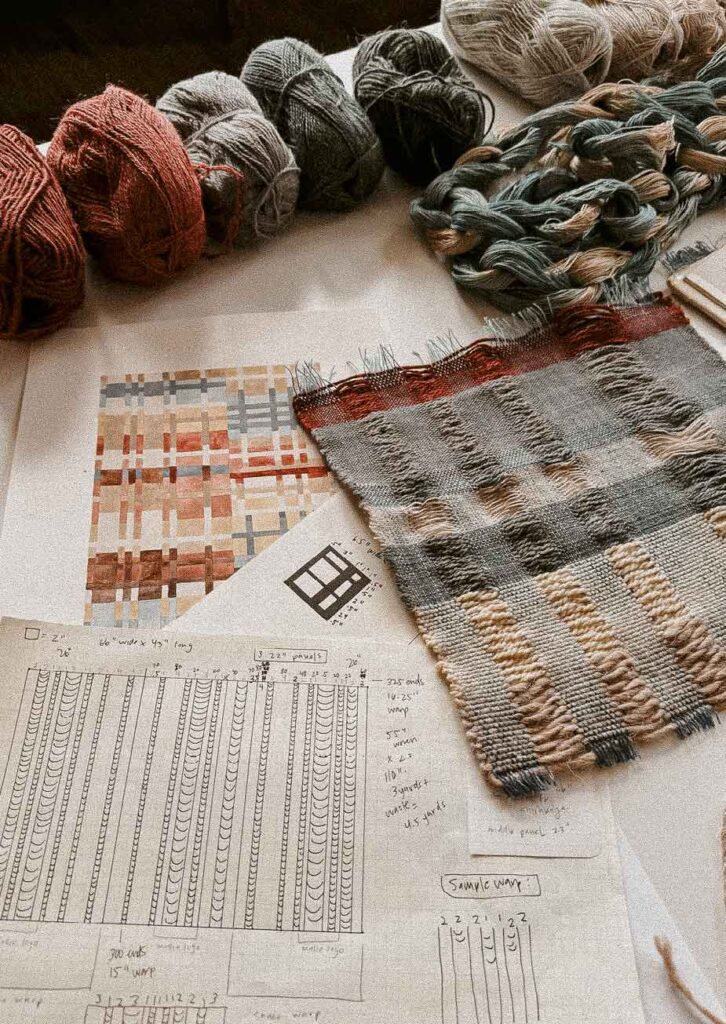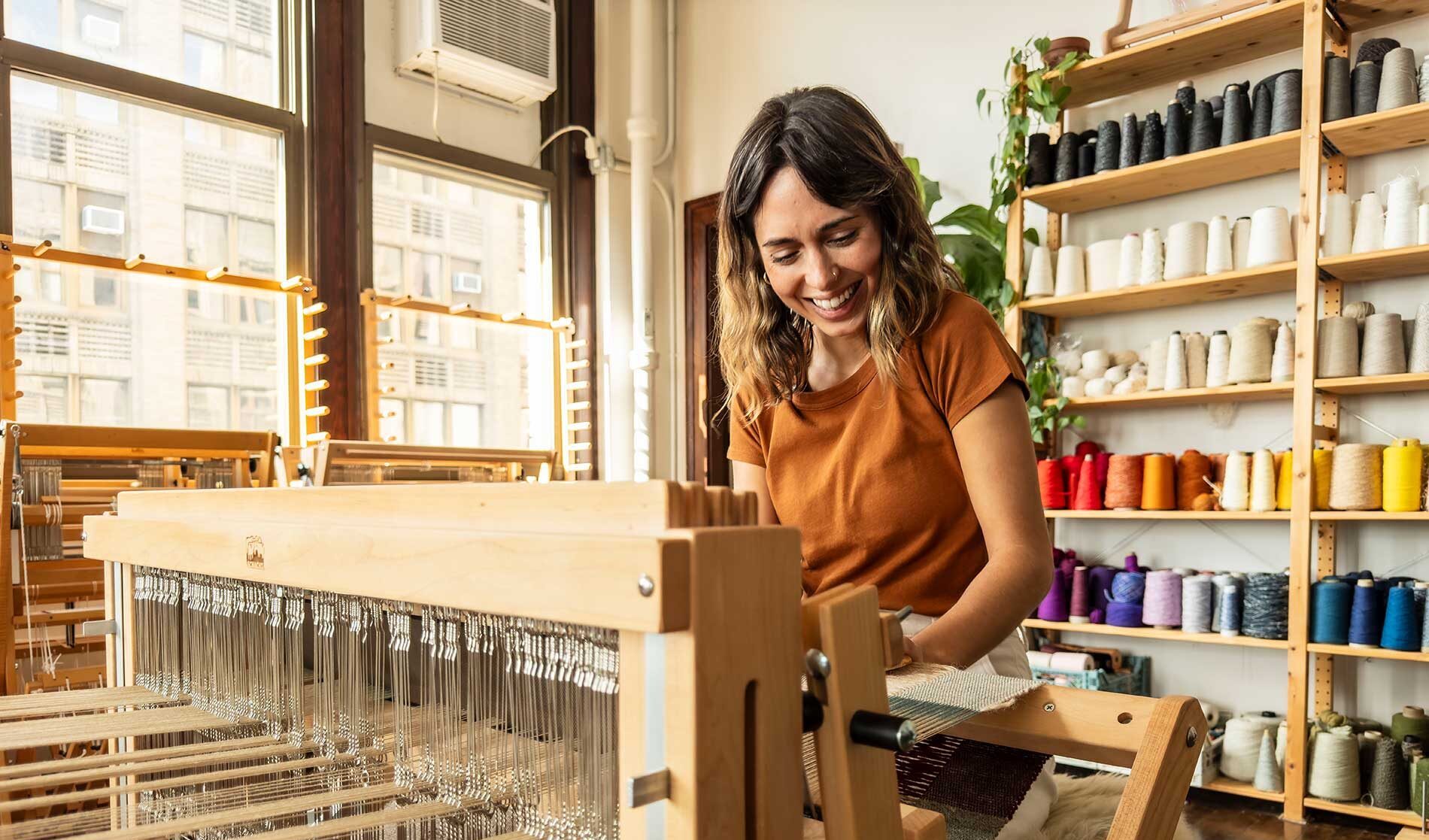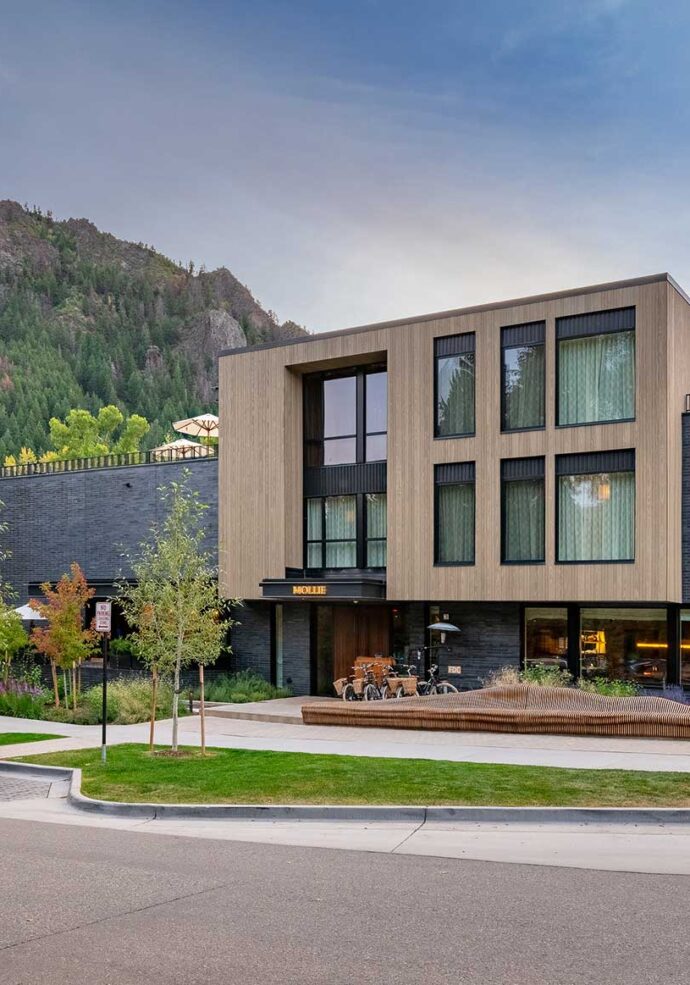Weaving Meaning: Introducing Textile Artist Rachel Snack
Entering MOLLIE, there’s a weaving hanging on the back wall of the lobby, next to the fireplace. Warm and inviting, it helps welcome you to MOLLIE and to Aspen — to relax in your downtown retreat as you plan your perfect stay. And while it may not strike you as such, the weaving’s story is rich and layered, similar to the history of modern Aspen — interwoven with it, too.
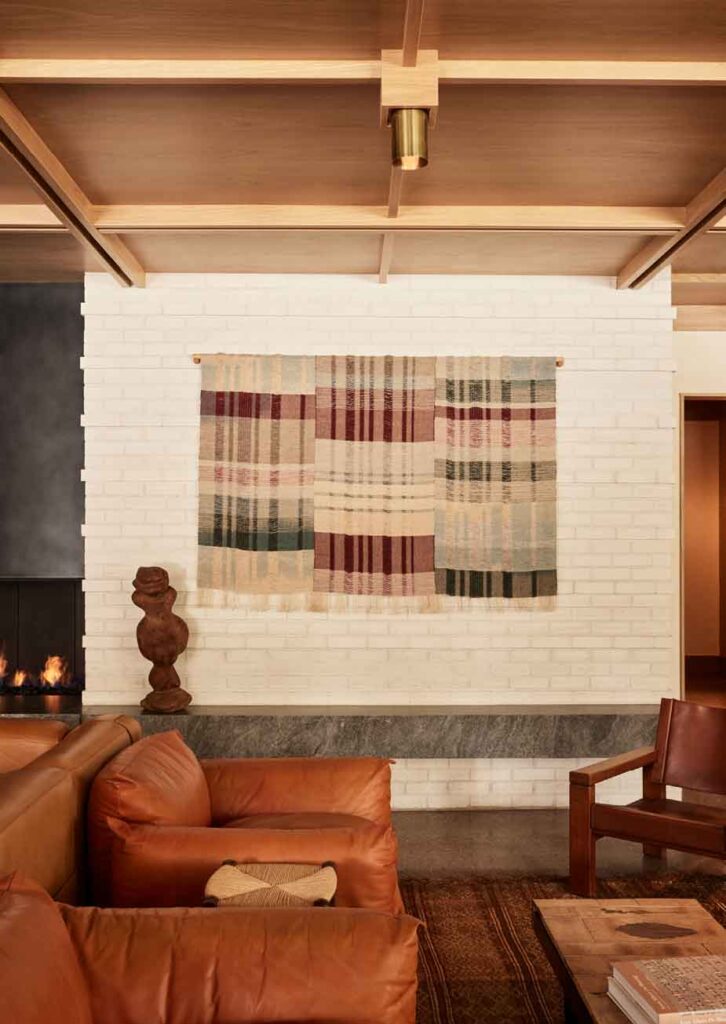
It all started with two midcentury artists: abstract painter Agnes Martin and weaver Anni Albers. Martin was known for her use of grid patterns, and Albers, a textile arts pioneer, was a product of the Bauhaus, the German school of art and design that shaped people and places worldwide, including Aspen. Both women were connected to Aspen during its rebirth as a cultural and recreational destination after World War II — a time bursting with creativity and ideas, of originality and a new identity, of idealism and innovation. It was a period that’s reflected in every aspect of MOLLIE.
These two extraordinary women and their work provided inspiration, as did the original Mollie Gibson, a mining-era Aspen woman for whom the world’s largest silver mine (just up the road from MOLLIE) was named, and who was the model for the 18-foot-tall Silver Queen statue, Colorado’s entry into the 1893 World’s Fair.
With these three women and what they represented as inspiration, Post Company together with MOLLIE owners Aaron and Michael Brown set about developing the hotel’s interior design and brand. They created MOLLIE’s mark, evoking the legacy of Martin and Albers in its underlying grid and woven, Bauhaus feel. They explored and settled on colors and typography, carefully considering both the inputs and the feelings evoked, and rooted in Aspen’s natural tones and materials. The whole process was as deliberate and intentional as Bauhaus master Herbert Bayer’s design of the Aspen Institute campus and mark on the burgeoning town.
One idea that emerged from this process was to create MOLLIE’s own weaving, a piece that would bring to life the various influences on the hotel’s brand, as well as set the tone for the at-home, residential experience one finds there. “There’s a certain warmth in weaving, because of the materials used,” says Aaron. “And there’s a sense of warmth you feel when you’re at home, and we wanted to create that kind of warm, comfortable environment in the hotel.”
With this idea in mind, the team set out to find an artist who could execute their vision and whose work would embody the hotel’s design ethos.
They found exactly what they wanted in Rachel Snack.
A weaver, educator, and textile artist based in Philadelphia, Rachel focused on Anni Albers and Agnes Martin in her master’s thesis. Albers, whom she considers “the grandmother of contemporary weaving,” was hugely inspirational in the way she wrote and thought about weaving.
Albers described textiles as having “tactile sensibility,” Rachel explains, based on the idea that “touch is so important to our everyday lives; and it informs our senses. In modern day society, we’ve lost that relationship to touch and tactile sensibility, because we no longer bake our own bread, and we no longer do things with our hands anymore. So weaving is a language, a way to reenter that relationship with touch and to regain a tactile sensibility.”
Agnes Martin’s paintings, Rachel says, have a textile quality because they’re on the grid — just like weaving on a loom. And in her work, Rachel continues, “you can imagine that grid extending beyond the confines of the painting. I feel that way about weaving — that the grid extends beyond the confines of woven cloth, because of how much we carry with us every day and how much textiles inform our lives. And I think Agnes Martin’s work is just really stunning and beautiful, a gorgeous way to memorialize the grid, and I think that’s why it’s so easy to correlate her to textiles.”
When Aaron and Michael first contacted Rachel, they knew “this is the one,” says Aaron. “She got it immediately.”
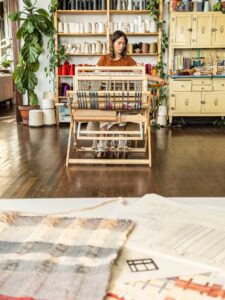
The synergy was there for Rachel, too.
“I felt like they were speaking my language,” she says. “Although the project was complex, saying yes was not a hard decision — it would be easy for me to weave something in my artistic language that would fit nicely into the space. Our visions were really aligned.”
Rachel and the MOLLIE team worked together for months, building from the fundamentals they’d established on the vision for the weaving. It was a process that involved studies and samples, deliberations over materials and colors (all natural), and a watercolor that would serve as the basis for the weaving.
And finally, the weaving — the culmination of a journey through Aspen’s modern history, a design rooted in this special place and the people who made it so, yet with an enduring impact that extends beyond the grid, and perhaps most importantly, makes you feel at home.
“Standing in front of the weaving, I hope people will have that slow realization that this is a textile,” says Rachel. “I love the idea of people maybe associating yarn or wool with itchy sweaters, and being able to find that new relationship with the material seeing it used in a different way, in a fine art context. I think the piece is a really nice marriage of those two things — it’s accessible and cozy and warm, but it also has power and essence as an artwork.”
